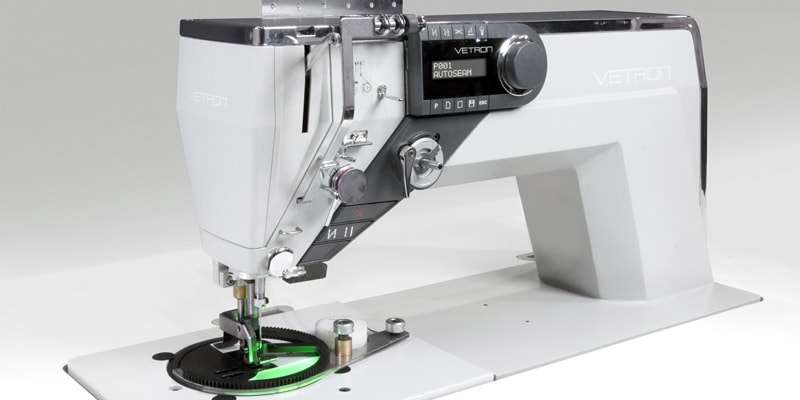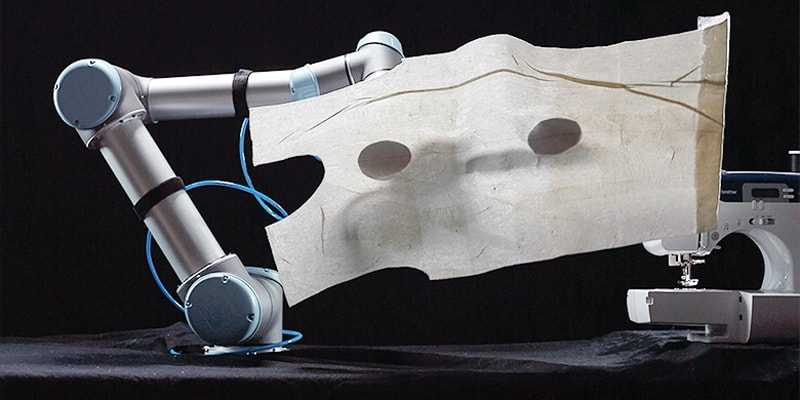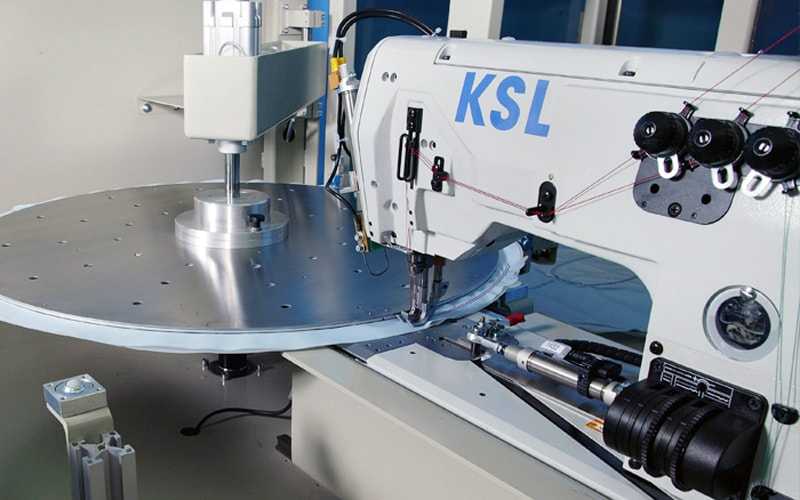Uber sees real-world testing as critical to the success of autonomous driving technology. Can we see it as disruptively innovative? Yes, we can! Tesla Motors probably shouldn’t exist without electric cars; the last successful American car start-up was founded 111 years ago. The hyperloop transportation system may actualize Delhi-Mumbai travel in less than an hour. No doubt the drone delivery of pizza or grocery by Amazon Prime may disrupt your daily life very soon in the most innovative way. The Loon project from Google may soon connect the remotest part of the world to your laptop. Aren’t these disruptive? But what about innovation in the textiles and sewn products industry? Frank Henderson, President, Henderson Sewing Machine and Dr. Prabir Jana, Professor, NIFT Delhi write…
Disruptive Innovations in Apparel Manufacturing Technology
Kevin Plank’s vision for the future of manufacturing is local-for-local, i.e. to bring products closer to where the brand’s products are sold. Adidas is creating a new US-based manufacturing plant in Cherokee County, Georgia. It had already deployed a speed factory a couple of years back. Their motto is to create products that are speed to market. All these happened before Donald Trump’s win or in the words of Brexit “before unexpected disruption in industrial politics”. Disruptive technology refers to any enhanced or completely new technology that replaces and disrupts an existing technology, rendering it obsolete. It is designed to replace similar technology that is already in use. Repetitive Motion Manufacturing is also a kind of disruptive technology.
Sewing Automation

Vision Systems Integration in sewing process has already created a ripple in the market. The increased processing power of computing and miniaturization of chip size is making things possible which earlier were not thought to be so. The ability of a vision-based system to look (capture image), process the captured image at a split second (much like the neurons in our brain) and direct mechanical actions, is a reality. This is very similar to a sewing operator who is handling/guiding the fabric during the sewing process. The Autoseam from Vetron and Softwear Automation technology have already shown promising prototypes based on this logic. This is a revolutionary change, a disruptive innovation.

The Auto Drapery Pleating machine is another automated device. What this device does is to fold the pleat, insert it into the machine, sew the drapery pleat, move the fabric, then advance it forward to bring the next pleat into the sewing machine. Similarly, Robot Load-Sew Overlock Panel is a standard robot with a proprietary feature in the overlock machine that can join together the fabric plies, so that it can actually load the panel, and sew the panel without human intervention. The Robotic Towel Sewing machine is one type of automated system that actually takes a roll of the fabric, cuts the fabric from a roll, and then the fabric is moved by the robot plate into the sewing machine. The robotic plate moves the fabric and sews around all four sides of the towel and then gives back the finished sewn towel.
‘Three’ Dimensional Sewing
A 3D sleeve setting machine was actually developed in Georgia in 1976. 3D post bed sewing, 3D automobile dashboard sewing and side panel sewing are already commercially used in the industry. Sewbo, a Seattle-based start-up, approaches 3D sewing in a completely different way. First, the fabric is rigidized so that a robot can pick up flexible fabrics and move them through the sewing process. The rigid T-shirt is then placed into a liquid material to soften and it then comes out as a flexible fabric T-shirt. This is innovatively disruptive. Jon Zornow, the inventor, used a robotic arm that picks up the stiffened panel and puts the fabric into the sewing machine. Such rigidization of fabric for easy handling was tried even 25 years ago but had failed at that point of time.
Routine jobs performed by robots… Are amazingly disruptive!

Routine jobs which were earlier performed manually have now completely been replaced by robots. Some robots only automate the sewing and unloading processes i.e. disposing off. For example, the Auto Airbag Autonomous Cell is a single operator that runs 6 different sewing workstations. So, the operator simply loads and unloads cut fabric goods. Auto Panel Sewing Robot is a standard robot that loads into a conventional sewing machine and sews the panel. Tee-shirt and sweatshirt workstations by Atlanta Attachment Company can hem and close a sleeve.
In some cases, robots not only automatically sew and unload the material, but also automate the picking up operation. For instance, Auto Airbag Operation is a robot or hard automation that loads the airbag and sews it. Another one is Auto Bra Pad Production – a fully mechanized system. In this customized automat, Henderson Sewing incorporates an overlock machine (from brands such as Juki, Pegasus, Yamato and others) to sew bra pads of round shape by automatically loading components into hard automation that again loads the components into the overlock machine and sews around the circumference of the product, cuts the thread, and offloads the finished product once the process is complete. Besides these, Auto Head Rest is actually a robot that drives the head rest components around and through the sewing head. Last but not the least, Dual Arm Robot Assembly, which amazes many as it comprises dual arms just like humans to handle products, can also do things like hands-on garment pieces which a person does.
There are robots that also do the additional folding operations in between the process of sewing, like Auto Elastic Ring Robot as it measures the elastic to size, folds it together and inserts it into the sewing station and is used for making waistbands of pants, underwear, athletic wear and ladies’ panties. Another robot – Autonomous Strap Machine for bras actually folds the straps and ultrasonically seals the strap, laces it through the ring, inserts it into the sewing machine and sews.
Affordable Automation
Universal Dual Arm Robot is a programmable robot that can do tasks like pick up and dispose of things. The same type of robot technology was used by Jon Zornow of Sewbo. Baxter Dual Arm Robot, produced by Rethink Robotics in Boston, can be used for ‘pick and place’ operations or machine tending. Omron Adept Scara Robots are very accurate, extremely precise and really fast. All these robots cost around US $ 25,000, which is definitely a revolution in inexpensive automation and truly disruptive. Recent development of ‘Brabo’, India’s first indigenously produced robot (by TATA Motors subsidiary) at US $ 10,000, further raises hopes for micro, small and medium enterprises in terms of automating various processes.
Robotic End Effectors
ExoHand from Festo, is a sophisticated robotic hand that is capable of fine motor skills which allows the human hand to have a delicate touch or perform complex manipulations. It comes in two forms: as an extremity of a robotic arm and a wearable exoskeleton glove. The system is designed in such a way that the glove can aid assembly line workers performing repetitive tasks with their hands or be used for the remote manipulation of the robotic arm by a user wearing the glove.
SynTouch Texture Discriminating Robotic Finger is a haptic sensor that provides robots with a sense of touch. SynTouch is a spin-off of the Medical Device Development Facility from University of Southern California, where the team initially focused on prosthetics. The company used this sensor to develop the SynTouch Standard, a taxonomy of more than 500 materials ranging from synthetic fabrics to natural materials like stone. The standard is based on 15 factors, including coarseness, smoothness, friction and thermal properties. The idea is to create a standardized process to measure and classify the texture of any flat surface, taking subjectivity out of the question about whether two objects feel the same. These innovations are disruptive and can reduce the labour intensity of sewing.
Electro Adhesion can pick up one piece of fabric at a time from a stack. It can load a cut piece of fabric onto the top of a second piece of fabric and set it there through electrostatic adhesion.
Internet of Things
All the things are internet-connected…, devices and machines working together to optimize production and efficiency. Industry 4.0 has some key design principles. First is interoperability – the ability of cyber-physical systems, humans and digital factories to connect and communicate via the internet. Second is virtualization – monitoring actual processes that take place in the physical factory to create virtual models or simulations. Third is decentralization – the ability of systems within digital factories to make decisions on their own, with no human intervention.
Smart Wearables
Smart wearables have a sensor-based system to actually record respiration, heart-rate and many other things. Wearable technology industry was estimated to be worth US $ 24.2 billion in 2015 and is expected to grow three times that size in ten years’ time – creating a market of US $ 74 billion by 2025. The first generation of smart garments actually incorporated/embedded the electronics in otherwise ordinarily sewn products. The second generation has practically made smart textiles that have inbuilt sensory, electroconductivity and other capabilities. Power-generating fabric that harvests energy from sunlight and movement has already been created in Georgia Tech University. Again we are making garments out of these fabrics; although alternative ways of joining fabrics are being explored, there is not much difference in the way we make such garments. The third generation of smart wearables will be effective manipulation of materials to create 3D shapes which will be a new way of creating garments. And 3D printing will lead the way.
Automated yet not adopted!
Auto Bobbin Checker is actually a measurement pin inserted into a bobbin case at the time of thread cutting operation and detects the residual quantity of the lower thread. Auto Skip Checker is extremely crucial in Automated Sewing Autonomous Work Cells. Auto Bobbin Changer is the ability of systems to automatically change the bobbin and bobbin case enhancing rationality, cost reduction and production efficiency. Auto Collar and Cuff Sewing Stations are very common in shirt production for collars, cuffs and epaulets. The reason behind this is their capability to sew and trim so that the fabric can be turned, creased and top stitched. These are almost two-decade-old inventions, yet not found in many commercial manufacturing facilities today.
Conclusion
Reebok is bringing some shoe manufacturing back to the US. The company wants to develop manufacturing capabilities in the country as the athletic gear maker unveiled plans to open a new manufacturing lab that relies on futuristic liquid material and 3D drawing. That is very innovative! Another firm, Coleman Company which was established in 1890 in Concord, North Carolina, today manufactures in the US. They said we need to bring back to the US the products that are manufactured in China or other parts of the world. Why? because of Speed to market! NEW BALANCE based in Boston has five manufacturing facilities in the US today and manufactures four million pairs of athletic footwear per year that are ‘Made in America’. Nike is also combining 3D knitting with 3D printing technology to create new sports footwear… That’s also something very innovative!
A culture of continuous improvements, being at the forefront of operational efficiency and technology innovation, are essential as this successfully increases performance to manage cost and drives sustainable growth and development. The trend is changing probably for good; while off-the-shelf automation is standardized across the globe, the scope for customized automation is increasing with niche players like Henderson, USA and RSG, Germany addressing the need…

Post a Comment